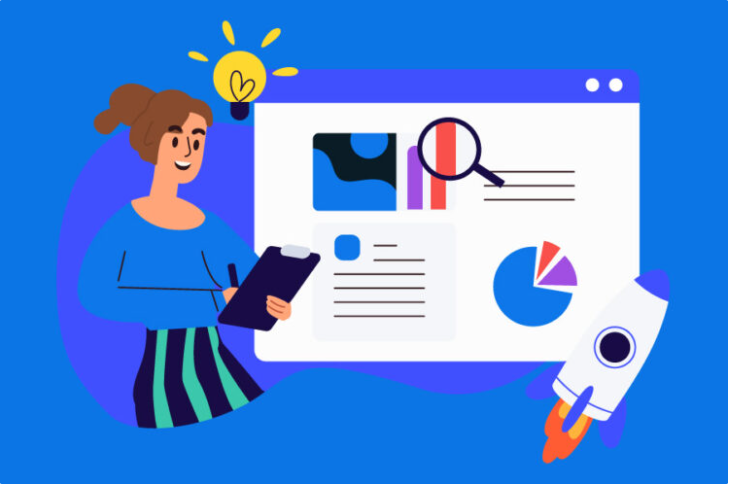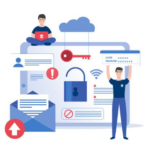Web accessibility is a crucial aspect of website development that cannot be overlooked. It involves making websites and digital content accessible to people with disabilities such as visual, auditory, cognitive, and motor impairments. Web accessibility is vital in ensuring that people with disabilities can access and use the internet without any barriers, just like everyone else. As such, it is essential to understand the importance of web accessibility and why it should be a top priority for website developers and businesses.
The importance of web accessibility cannot be overstated. With the increasing reliance on digital platforms, it is essential to ensure that everyone can access and use online content without any challenges. Web accessibility is not only a legal requirement in some countries, but it is also a moral obligation for businesses and organizations to ensure that their digital content is inclusive and accessible to all. In this article, we will explore the benefits of web accessibility, the different ways to improve website accessibility, and the impact of web accessibility on user experience and SEO.
Web accessibility
Web accessibility definition is “websites, tools, and technologies designed for persons with disabilities.” But when it comes to online accessibility, “disability” doesn’t mean only those who have vision or hearing impairments.
Everyone regardless of their ability must have access to online information. The internet is more equitable and inclusive, if we make websites open to all users. According to a specialist in online accessibility, “Everyone benefits from increased web accessibility.” The importance of web accessibility extends to all users, not only those with disabilities.
What then may prevent individuals from using the internet? Let’s investigate.
Why Do People Struggle to Access the Web?
More than 20% of internet users have difficulty accessing the information they need online.
There are a wide variety of online barriers that people encounter online. Some of the barriers are temporary or permanent impairments to situational restrictions and problems with technology or the internet. The importance of web accessibility is the breaking down of online digital barriers to content and websites that are inaccessible.
Disability
Visual problems such color blindness, cataract, glaucoma, and blindness hamper ssers’ ability to browse websites.
Auditory – Ranges from extreme deafness to hearing loss in old age. There is a wide spectrum of hearing impairments that may limit online accessibility.
Memory, language, reasoning, and judgement problems may all have an impact on how you navigate the web.
Physical – Physical limitations and limited mobility might make it difficult for individuals to type data or simply browse the internet.
These are only a few of the impairments that may limit a user’s ability to use the internet. Additional problems with web accessibility include temporary disabilities such assistive technology such as screen readers. All these change how a user interacts with the web.
Justifications for increasing web accessibility
Accessibility is a crucial problem on many different levels. Ethical, business, and legal are a few of them. Let’s examine each of them individually.
Ethical
Accessibility is first and foremost defended from an ethical standpoint. T
The worldwide organization World Wide Web Consortium (W3C) works to “lead the Web to its highest potential.” Just like in the physical world, the W3C is working toward a more equitable and welcoming Internet. This includes all people, regardless of who they are or what they need.
The online barriers disappear when the web is completely accessible. Universal web accessibility ensures all users have the same rights and privileges while doing business online.
Business
If the ethical standpoint isn’t enough to win you over, then the business case for accessibility may help. An average of 20% of all people who visit your website will have issues accessing your content. If your site is inaccessible, that is a lot of potential customers that you have missed out on.
Accessible websites also perform better across the board too. By using universal design strategies your site becomes more user friendly to all, not just those with disabilities.
This will ultimately improve your site’s performance. Whether this is communicating messages and information more clearly, streamlining site navigation, collecting leads, or generating revenue.
Legal
Lastly, there is a very strong legal argument for accessibility. If your website isn’t fully accessible, then it is discriminatory towards those with disabilities. Depending on your country and state, and where your audience is located, this could leave you open to lawsuits.
You will find that laws on accessible websites differ greatly. For example, government and public sector websites have to adhere to much stricter accessibility laws than some other industries. However, you must be aware of the accessibility laws and guidelines in your country. This ensures that your site complies with regulations – and make the necessary changes if not.
What are the standards?
There are two sets of guidelines that you can follow. One is the Web Content Accessibility Guidelines (WCAG) 2.0 and the other is WCAG 2.1. WCAG 2.0 AA is the current standard in most countries. WCAG 2.1 focusses more on mobile and responsive. Within each set of standards, there are three different levels: Level A, AA, and AAA.
Making Your Website More Accessible Right Away
W3C has produced Web Content Accessibility Guidelines (known as WCAG 2.1), a set of internationally recognized guidelines for improving web accessibility. These guidelines are extensive. You may need to work with accessibility professionals to get your website up to scratch.
However, below we share a few top tips to help you make your website more accessible right away.
Include alt text for every image
The alternate text will appear if an image does not load on a web page. On the other hand, screen readers use alternate text to help users understand the content more easily. Make sure the alt text explains the visual in an understandable manner.
Underline links and give them meaningful names
Hyperlinks must have meaningful names. It allows screen readers to readily recognize the links within the text.
It is important to guarantee that visitors who have visual or hearing impairments are able to access your website. Include text alternatives such as captions, transcripts, and other text alternatives for video and audio.
Choose your colors carefully
It is important to make sure that the colors on your site contrast effectively. This is to ensure visitors can easily differentiate the various content pieces on your page. Color alone must not be used to convey information. For instance, a form that utilizes color to designate a mandatory field should also include some other type of indication.
Use tables for data
Use tables only for tabular data, not for layout reasons, to avoid confusing screen reader users. Adhere to W3C Table Guidelines, while designing a table.
Utilize a form builder that is accessible
It is essential that the forms on your website are accessible to all of your visitors. This will allow users to get in touch with you, sign up for a service or perform any other action that requires them to enter their data and submit a form. Every website should absolutely make use of a form builder that comes equipped with the capacity to enable users to design forms that are accessible.
Check out the W3C’s Easy Checks if you want to learn more about how to make your website more accessible. This will assist you in doing an audit of your website.
What’s the Big Deal About That?
At a minimum, there are four fundamental reasons why accessibility is essential, and they should all matter to us:
In 2011, 11% of college students reported having a disability, according to the National Center for Education Statistics. A more recent study revealed that nearly 13% of the population of the United States had a handicap. This is how the mission statement for the University of North Carolina at Greensboro reads: “an integrated, cooperative, and reactive entity creating an impact on the lives of pupils and the populations it serves.”
It is Beneficial to the Accessibility of the System
When we design our online content with accessibility in mind, it naturally enhances usability and often results in a user experience that is simpler and more intuitive than it would have been otherwise. It is likely that anything published online that meets with accessibility criteria would make the experience simpler to use for everyone.
This might be the case since accessibility guidelines are universally applicable. Persons who do not have disabilities but are in circumstances that limit their mobility may benefit from accessible design, in particular when such people are in various situations. Reading a video’s subtitles is a good idea regardless of whether you’re in a noisy or quiet place. It is possible to navigate a website entirely via the use of the keyboard.
Watch our Accessibility Insight Interview Series on ‘Benefits of Accessibility on the World.’
Because accessibility is the ethical thing to do
Accessibility paves the way for those with impairments to have an active role in the life of our society. Higher education establishments have a certain amount of responsibility towards the community they serve. Accessibility is beneficial not just to this concept but also to the purpose of UNCG. The importance of web accessibility in the ethical structure of an organization contributes to its commitment.
Because of the Law
Federal and state legislations require higher education institutions to make their electronic and digital material accessible to students with disabilities. The importance of web accessibility comes to the fore when lawsuits are filed against big companies.
Several colleges are subject to legal action for failing to comply with online accessibility standards in recent times. So breaking these regulations might result in a loss of money (including federal financial assistance monies). The University of Washington has compiled comprehensive descriptions of a number of higher education settlement agreements and lawsuits pertaining to online accessibility.
Who are the Beneficiaries?
It Benefits Society and Individuals
Accessible website content ensures that everyone can read it and participate. Comprehensive interactions mean everyone may participate and receive the same information. It enables numerous individuals to take part in community and express their viewpoints.
It Makes Sense Financially
Accessible websites and content attract more users. For UNCG this involves increasing its reach into a number of sectors, which might lead to an increase in website views, enrollment in courses, usage of services, and more.
Accessible websites improve SEO. Google, Yahoo, and others rank accessible websites higher. Building an obtainable, benchmark website from the start is cheaper than redesigning it.
Conclusion
Web accessibility is a critical aspect of website development that plays a significant role in ensuring inclusivity and equal access to information on the internet. Creating accessible websites not only helps people with disabilities but also benefits businesses and organizations by improving their reach and user experience. Therefore, it is crucial for website developers and businesses to prioritize web accessibility and adopt the necessary measures to make their digital content accessible to everyone.
As the digital world continues to evolve, the need for web accessibility will only increase. It is vital for website developers and businesses to stay up-to-date with web accessibility guidelines and best practices to ensure that their websites are accessible to everyone. By prioritizing web accessibility, we can create a more inclusive and equal digital world where everyone can access and use online content without any barriers.
Web accessibility isn’t the toughest nut to crack. All it takes is some commitment to learning the common issues and their solutions. A good rule of thumb is to never leave accessibility planning as the last project in designing a website. Rather, incorporate accessibility from the very beginning of the site planning and creation and subsequently to every project that follows.








